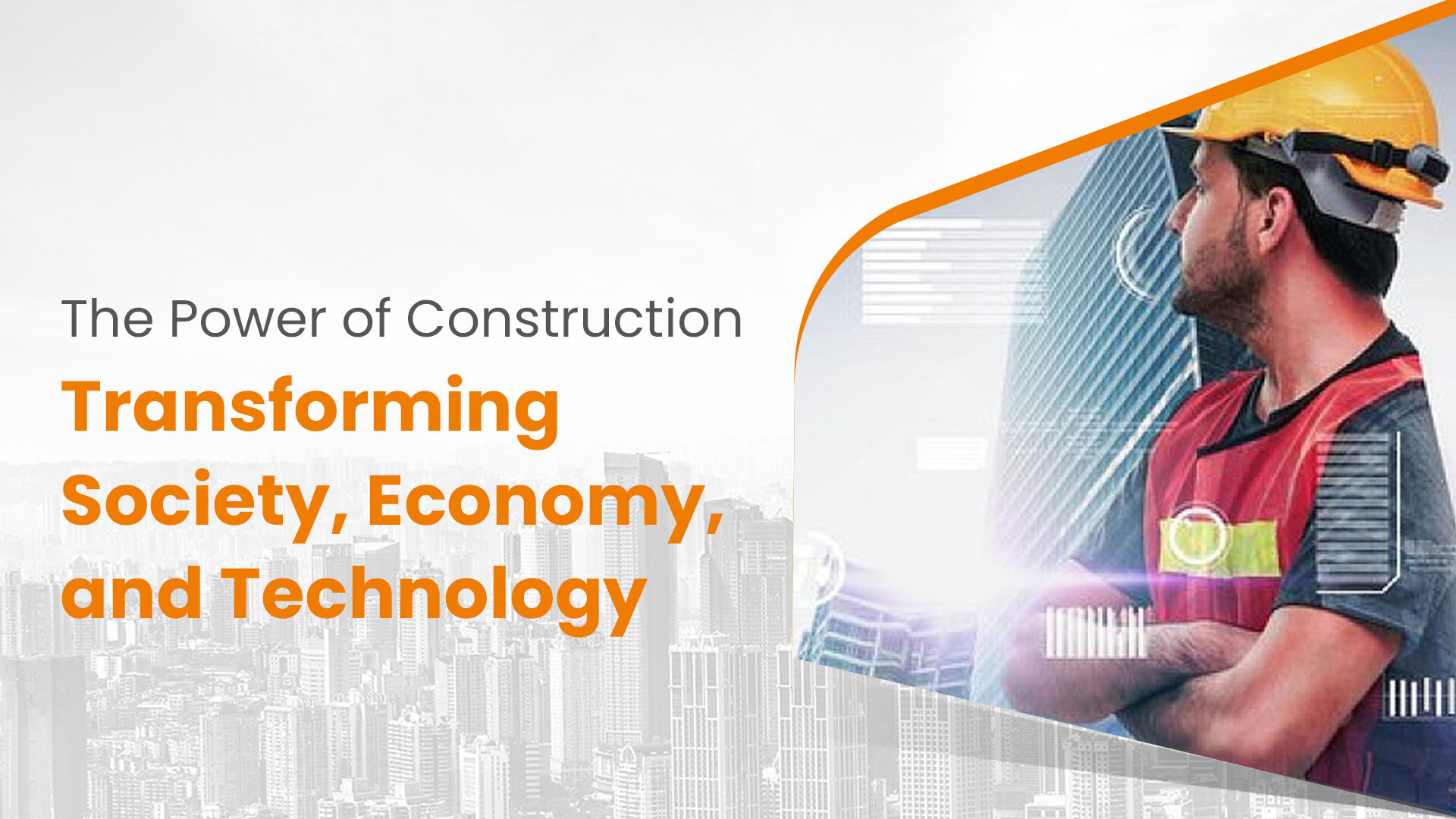Abstract
Construction is a crucial industry that drives economic growth, technological advancement, and social transformation. This whitepaper delves into the multifaceted role of construction—from infrastructure development to sustainability innovations and digital transformations. We explore key trends, methodologies, and technologies reshaping the future of construction, assessing the impacts across various sectors and the potential it holds for addressing pressing global challenges, such as urbanization, climate change, and socioeconomic disparities.
Introduction
Construction is often regarded as the backbone of development for societies globally, providing essential infrastructure for housing, transportation, energy, healthcare, and education. As populations grow and urbanization accelerates, construction is faced with increasing demands to scale sustainably, incorporate advanced technology, and minimize environmental impacts. This whitepaper provides a comprehensive look at the power of construction industry’s to drive meaningful change and its potential to adapt and evolve to meet the growing global needs.
Historical Context of Construction as a Driver of Civilization
Throughout history, construction has played a fundamental role in societal advancement. Ancient wonders, such as the pyramids of Egypt, the roads of the Roman Empire, and medieval cathedrals, reflect the technological, societal, and cultural progress of each era.
These monumental projects showcased not only technological achievements but also a society’s values, beliefs, and aspirations. The industrial revolution marked a turning point in construction, where machinery, steel production, and new engineering methodologies enabled more ambitious projects, such as skyscrapers and dams, laying the groundwork for the modern construction industry.
In the 20th century, construction projects focused on transportation infrastructure (highways, railways, and airports), commercial skyscrapers, and residential developments, with the latter spurred by post-war population booms. Today, construction continues to evolve to meet the demands of a growing, urbanized, and environmentally conscious global population, positioning itself as a key industry in global development.
Current State of the Global Construction Industry
Market Size and Economic Contributions
The global construction industry is currently valued at over $10 trillion annually and contributes roughly 13% to the global GDP. With more than 7% of the global workforce employed in construction, the industry’s economic impact is substantial. Emerging economies, particularly in Asia, Africa, and Latin America, drive much of the growth due to infrastructure development, housing demand, and industrialization.
Key Industry Segments
The industry can be broadly segmented into four categories:
- Residential Construction: Increasing urbanization and population growth have intensified demand for residential housing, particularly affordable options in urban centers.
- Commercial Construction: Driven by business expansion, tourism, and the rise of service industries, commercial construction encompasses retail spaces, hotels, office buildings, and more.
- Industrial Construction: Encompasses factories, manufacturing plants, refineries, and energy facilities, supporting national economic activities and international trade.
- Infrastructure: Critical infrastructure projects—roads, bridges, airports, and utilities—support economic productivity and connect communities, enhancing quality of life.
Core Pillars of Modern Construction
Infrastructure Development
Infrastructure is fundamental to economic activity, connecting regions and promoting productivity. Roads, bridges, railways, and utilities ensure efficient movement of people and goods, which in turn enables access to markets, resources, and services. High-quality infrastructure development is also linked to better educational, healthcare, and job opportunities for local populations.
Housing and Real Estate
Residential construction addresses housing shortages driven by urban population growth. Affordable housing remains an urgent need, particularly in developing economies. Real estate construction, including apartments and condominiums, provides solutions for high-density urban living while facilitating community growth.
Energy and Resource Management
Energy facilities are vital for both economic and domestic needs. The construction of power plants, refineries, and renewable energy installations, like solar and wind farms, supports national energy security and drives the transition toward green energy.
Technological Advancements Transforming Construction
Building Information Modeling (BIM)
BIM is revolutionizing project planning, providing digital representations of physical and functional characteristics of buildings. This enables stakeholders to collaborate throughout the project lifecycle, improving design accuracy and reducing material waste and cost overruns.
Artificial Intelligence (AI) and Machine Learning
AI-driven tools enhance project efficiency through predictive analytics and design optimization. Algorithms can predict potential delays, identify risks, and suggest efficient resource allocation, ultimately lowering costs and improving safety.
Robotics and Automation
Robotic solutions are becoming more common on construction sites, handling repetitive tasks like brick-laying, concrete printing, and even demolition. Automation mitigates labor shortages, reduces human error, and improves site safety by minimizing human involvement in hazardous tasks.
Internet of Things (IoT)
IoT devices collect real-time data on equipment performance, worker safety, and environmental conditions. This data can improve resource utilization, reduce equipment downtime, and enhance safety measures.
Drones and Advanced Surveying
Drones enable aerial mapping and site surveys, significantly reducing the time and cost of inspections. With high-resolution cameras and LiDAR technology, drones capture detailed data that aids in project planning and progress monitoring.
The Role of Construction in Urban Development and Smart Cities
Urbanization and the Need for New Infrastructure
With over 60% of the world’s population projected to live in urban areas by 2050, cities require expanded infrastructure to support housing, sanitation, and transportation. This includes the need for efficient transit systems, water supply, waste management, and public amenities.
Smart Cities and Digital Infrastructure
Smart city initiatives leverage IoT, data analytics, and artificial intelligence to create digitally connected ecosystems. Smart construction integrates these technologies to manage urban infrastructure, optimizing energy use, improving traffic flow, and enhancing quality of life for residents.
Affordable Housing Initiatives
Housing shortages have led to a push for affordable housing. Solutions include modular construction, micro-apartments, and public-private partnerships to finance and develop affordable options, especially in high-cost urban centers.
Sustainable Construction: Addressing Climate and Environmental Impact
Green Building Materials
Eco-friendly materials, such as recycled steel, timber, and low-carbon concrete, are reducing construction’s carbon footprint. These materials also conserve resources, reduce waste, and minimize pollution.
Net-Zero and Carbon-Positive Buildings
Net-zero buildings are designed to balance energy consumption with renewable generation on-site. Carbon-positive buildings go further, generating surplus energy and contributing positively to the environment. Energy-efficient designs, renewable energy integration, and high-efficiency HVAC systems are standard in these constructions.
Water Conservation and Management
Water-saving technologies and designs, such as rainwater harvesting, graywater systems, and efficient plumbing, reduce water waste and enhance sustainability.
Economic and Social Impacts of Construction
Job Creation and Economic Stimulation
The construction industry is one of the largest job creators globally. Beyond direct employment, construction stimulates local economies through supply chain demands and boosts consumption in areas with new projects.
Bridging Infrastructure Gaps in Developing Nations
In low-income regions, investment in infrastructure reduces poverty, providing access to basic services, healthcare, and education, improving the socioeconomic landscape.
Enhancing Quality of Life
Construction impacts social well-being by improving accessibility to housing, transportation, and utilities, enhancing health, productivity, and social integration.
Challenges and Risks in the Construction Industry
Cost Overruns and Budget Constraints
Many projects face budget overruns due to unanticipated costs, insufficient planning, or resource scarcity, impacting profitability and project timelines.
Labor Shortages
Construction labor is in high demand globally. A shortage of skilled workers, compounded by an aging workforce, poses significant challenges, especially in developed economies.
Health and Safety Risks
Construction sites present inherent dangers due to heavy machinery, height, and hazardous materials, necessitating stringent safety protocols and training.
Regulatory and Environmental Compliance
Projects must comply with environmental regulations, which vary by region and can impact project costs and timelines. Ensuring compliance with these regulations requires effective planning and management.
Future Outlook: Opportunities and Emerging Trends
Modular and Prefabricated Construction
Modular construction, where components are prefabricated and assembled on-site, reduces costs, minimizes waste, and accelerates project timelines.
Virtual and Augmented Reality
VR and AR tools provide immersive visualization, allowing stakeholders to preview and modify designs before construction, enhancing collaboration and reducing errors.
Resilient Infrastructure for Climate Adaptation
Resilient construction focuses on creating structures capable of withstanding extreme weather events, critical for areas vulnerable to climate change impacts.
Circular Economy in Construction
The circular economy emphasizes reusing and recycling materials, which promotes sustainability and waste reduction. This approach supports long-term environmental and economic benefits.
Conclusion
The construction industry is pivotal to economic growth, technological innovation, and environmental stewardship. Embracing sustainable practices, digital technologies, and adaptive strategies, the sector is poised to tackle global challenges like urbanization and climate change, paving the way for a more sustainable, resilient, and connected world.
visit : lens360.ifieldsmart.com

